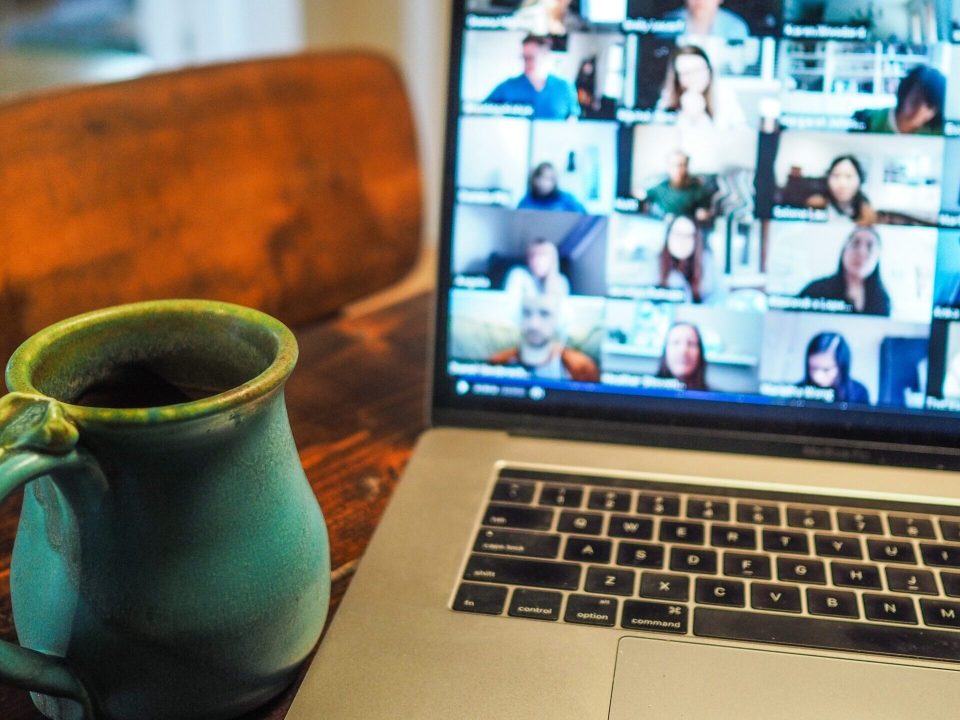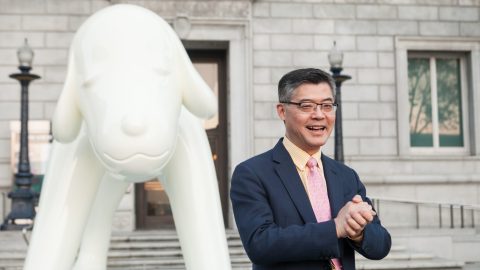
Preface:
I want to preface this reflection with a bit of context and explanation. Those who followed me on the #AAMvirtual or #AAMsmj hashtags throughout the conference undoubtedly noticed my near-exclusive involvement in sessions dealing with race equity, along with the hashtag #MuseumsAreNotNeutral founded by LaTanya Autry and Mike Murawski. I have mostly worked at culturally specific museums throughout my career and have purposefully engaged in race equity work therein. So, you may expect a post-conference reflection from me that continues the conversations around race and museums, especially now in this crucial time. However, that is not the reflection I have written. For many reasons, but namely that I am exhausted.
As many BIPOC museum peers can likely attest from their own experiences, I have spent the past several weeks putting in countless hours of emotional labor explaining racial injustices to mostly white peers, to the effect of draining the remaining dregs of energy left from just existing as a Black mixed-race woman in America. So, while it is extremely unusual for me to pass on the opportunity to push antiracist practice forward in our field, nonetheless I am deferring to another time when I am well-rested and mentally recharged. But if you are looking for further guidance on these issues I urge you to put in the work with: MASS Action, Incluseum, Empathetic Museum, and Museums and Race (and many more.) If you enjoy following me, please also follow Dr. Melanie Adams, LaTanya Autry, Dina Bailey, Janeen Bryant, Joanne Jones-Rizzi, Dr. Porchia Moore, Jackie Peterson, Adrianne Russell, and Dr. Noelle Trent (and many more!)
I was somewhere between scrubbing my younger toddler’s latest crayon masterpiece off my living room wall, scooping up my older toddler out of the pile of laundry I just folded, reading the latest news headline advising, “These 6 Steps for Reopening Your Business,” flagging my staff’s newest email proposing ten new digital program ideas to re-read “later” (as if time has any meaning anymore), reviewing the latest edits to our internal Reopening Planning document, and half-listening to a very interesting online session on audience engagement at #AAMvirtual, that I realized this “new normal” isn’t really working.
Let’s just call it, 2020 sucks. As I struggled to devote time to being present in the #AAMvirtual offerings, as a dedicated social media journalist for the digital conference, I realized some aspects of what makes the AAM conference a worthwhile annual pilgrimage cannot be replicated in a digital format—to no fault of AAM (whose staff I commend) or the inventors of the internet. While there were certainly many highlights to the virtual conference, including a keynote by Christy Coleman reminding us to “breathe” following the police murder of George Floyd, who cried out “I can’t breathe,” I do not feel overall that digital conferencing quite compares to the in-person experience.
Without ignoring the many social and environmental concerns of in-person conferences, I do think the benefits are worth noting, namely: the rare and enlightening opportunity to congregate with peers with whom you share a passion. Arguably, this opportunity is also presented in a virtual conference. However, the kicker is the simple fact that digital conferences, including the AAM Virtual Annual Meeting, are not natively digital experiences and thus aspects are compressed, minimized, or lost completely in the process. Those of us who have attended the Annual Meeting in person for years can attest that something is lost in translation. It is to this missed opportunity that I direct this reflection.
At the onset of coronavirus cancellations in museums across the US, I became overwhelmed with anxiety that the section of this field that I committed a career to—public programs—would become irrelevant and that in turn I would end up displaced like so many laid-off and furloughed museum peers. But in my brief moment of panic I turned to some guidance from outside the field and began re-reading Priya Parker’s The Art of Gathering. If you aren’t familiar, Parker is a biracial and multicultural facilitator in conflict resolution, a peace dialoguer, corporate meetings designer, and master facilitator. Her book focuses primarily on gathering theory and its application in personal, professional, and other settings. Discussing the undeniable power dynamic of gatherings, Parker argues, “hosting is inevitably an exercise of power.”
Parker would tell us that to build a better conference, we must first reconsider our purpose. In fact, she says, “Conferences…tend to be full of vertical connections between the stage and the guests but are short on horizontal linkages binding guests to one another.” Consequently, the problem in most conference settings (and in museums generally) is that they don’t exercise our power for the best administration of the gathering or its attendees. This is where, I believe, our annual pilgrimage could use some work.
While we have valued professional growth that accrues in traditional classroom settings like in traditional conference sessions, we haven’t historically valued professional growth that occurs in informal settings. In this regard, we shouldn’t overlook the learning opportunities and career enrichment that occur in the face-to-face AAM annual meeting outside conference sessions. Here are just a handful of professional expertise and learning opportunities that happen outside of the sessions:
1. Visiting other museums independently or on arranged tours
a. A real-time lesson presenting different perspectives on interpretive, curatorial, and marketing materials and resources.
b. Enlightening and informative observations of different visitors, audience behaviors, designed visitor flow.
c. In short, endless possibilities.
2. Networking activities
a. Opportunities to polish your professional style
i. Staff are often told it’s their own responsibility to develop their own interpersonal skills. Supervisors are often told to “develop” their staff. This resolves both quandaries.
b. Necessary time to broaden your world view
i. Many of us work in silos; this is a necessary elixir against that framework.
ii. If museums are truly to become more inclusive, the people who work at them must be immersed in inclusivity.
c. Humanizing our field
i. As museums move towards more audience-focused and human-centered design models, we need to work on humanizing our field.
d. Ideation
i. Ideas happen in the energy of newness found in networking and meeting new people.
3. Social activities:
a. Dinner. Drinks. Dialogue.
i. Let’s not pretend that some of the most pressing issues of the world aren’t resolved over dinner and drinks. Parker’s book frequently references examples of dinners of dignitaries and community leaders that resulted in new peace and prosperity.
b. Emotional intelligence
i. Social activity is an important aspect of professional growth. Emotional intelligence isn’t taught in any of the graduate programs; it’s learned in social environments like the annual meeting.
4. Hallway meetings
a. Planned or spontaneous, hallway gatherings are sacred, and though their impact is likely immeasurable, they nevertheless leave an impression. Inspiration flows, tribes reunite, new ideas are tested; and despite its many flaws the museum field is affirmed once again.
5. The inevitable “unconference”
a. Sometimes grown out of the hallway meetings, or sometimes planned from the start, the inevitable unconference (often occurring amongst the communal spaces in MuseumExpo) provides an unique opportunity to join in dialogue with peers on tough issues within the field—race, equity, representation, authority, decolonization, democracy, and beyond.
It is here in these “unofficial” spaces where we learn to incorporate new ideas into our practice. It is here where a digital conference cannot compete.
As for sessions, in Parker’s theory only those with a “disputable” purpose would actually be gatherings, with topics that can be discussed, debated, and dialogued over. A conference centered solely on a disputable purpose or debate might consider the role of race work in museum work, restructuring boards for greater inclusion of Indigenous thought leaders, closing the pay gap between directors and lowest-paid staff, or the inherent misogyny in the growing “pink collar” phenomenon in museums. Presentations of XYZ interpretative technique, curated exhibit, or researched entity cannot spark meaningful exchange in the same way because they are less disputable.
My hope is that during this time of discomfort we will utilize digital connections as needed and useful, but when the time comes that we can gather in person again that we do so with new purpose and greater appreciation for our togetherness and its meaning.
About the author:
Kayleigh Bryant-Greenwell is a cultural planner with over ten years of museum and gallery experience at the intersections of social justice practice. As Head of Public Programs with Smithsonian American Art Museum and the Renwick Gallery, she is responsible for an extensive calendar of programs across two museums, leading new outreach and inclusion initiatives towards developing new audiences and cultivating public engagement.






